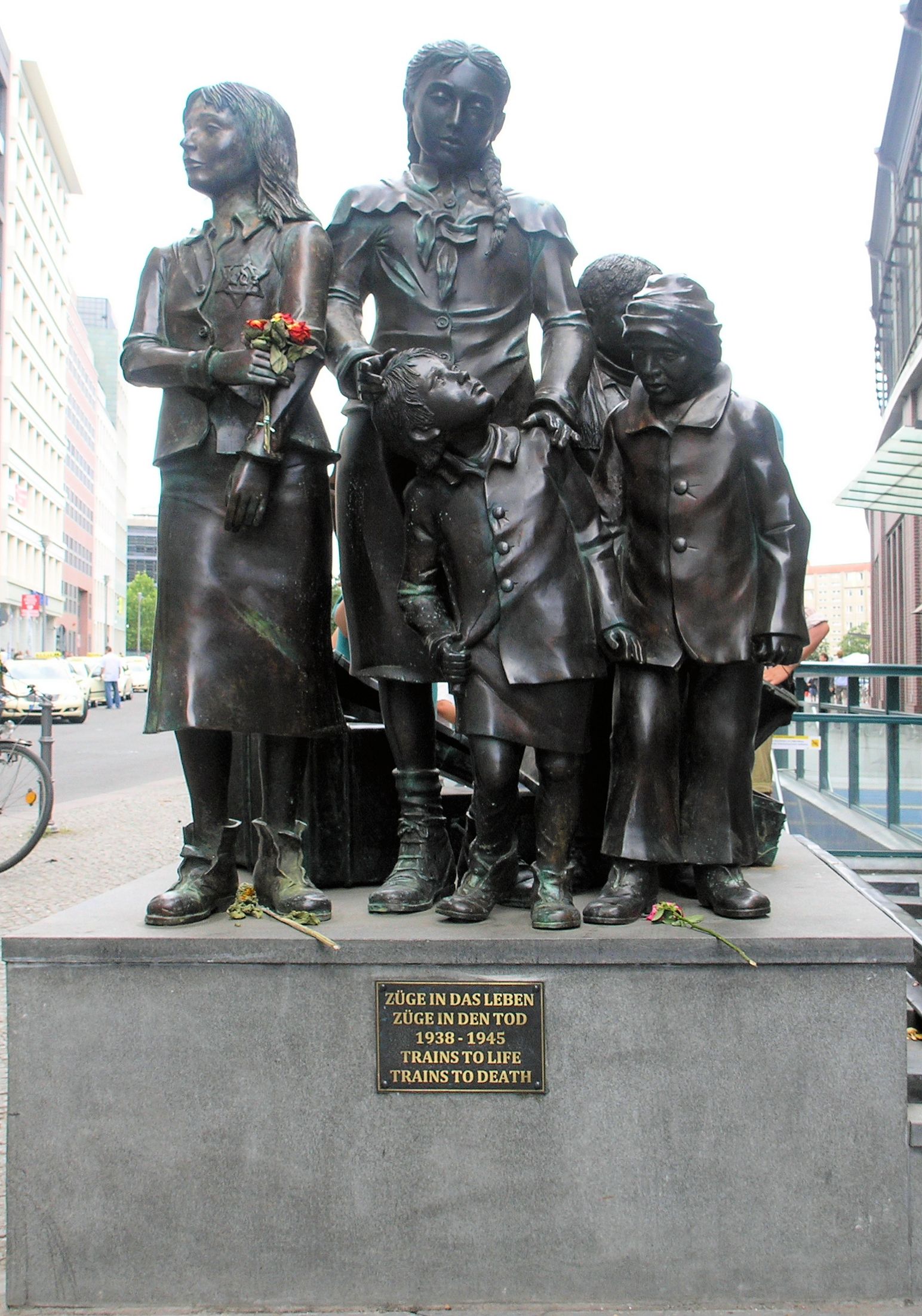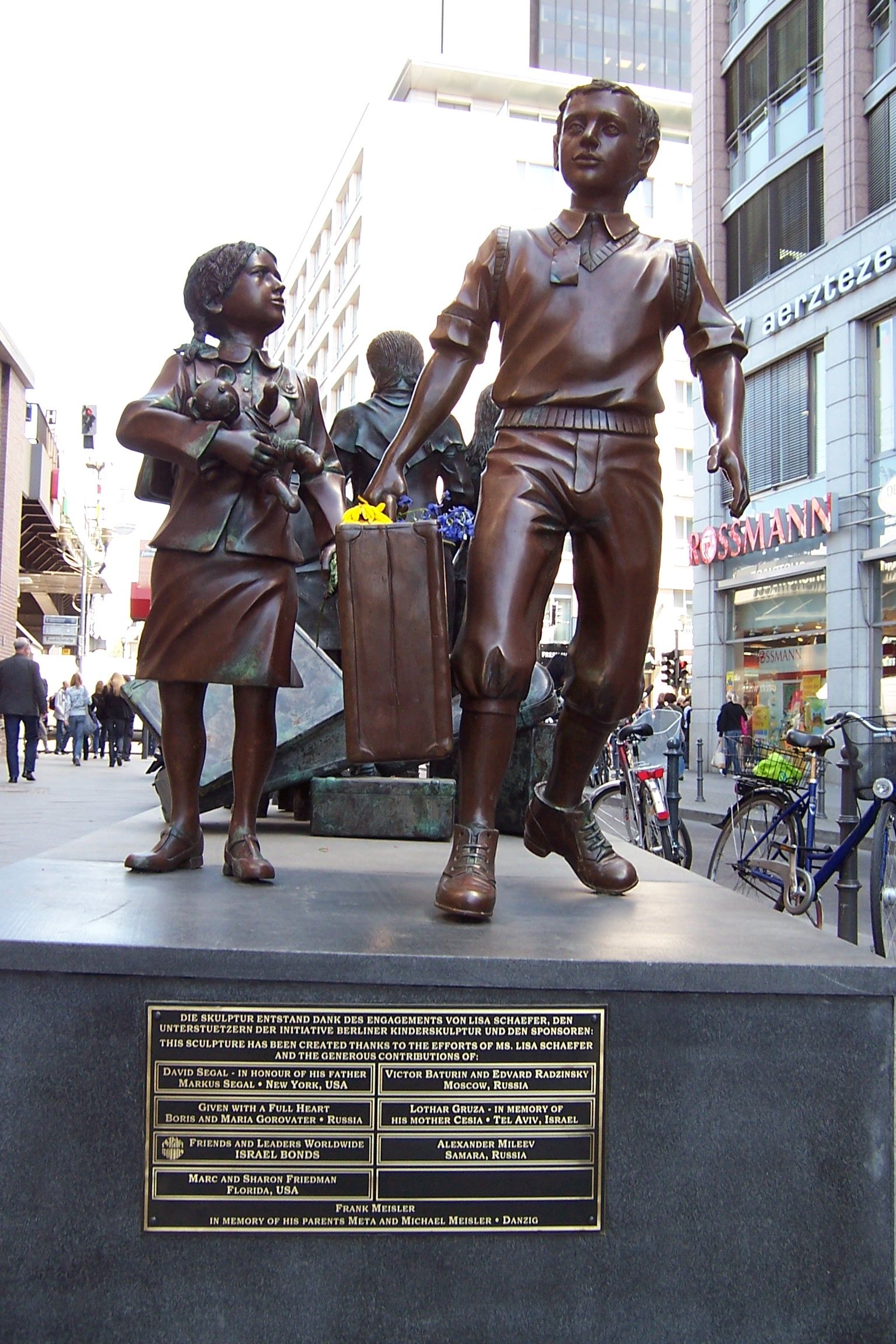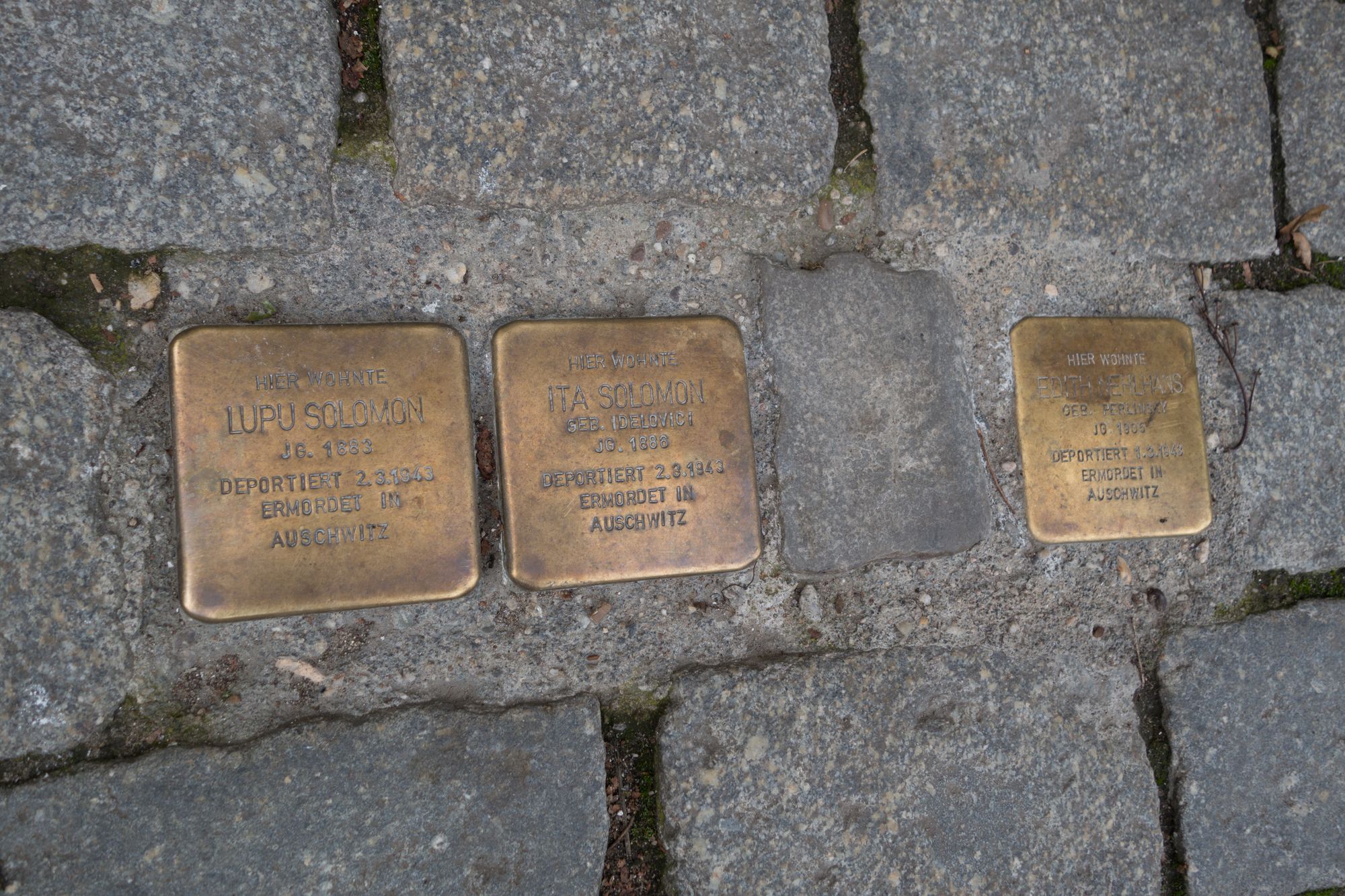It is a simple sculpture beside Berlin's second busiest transit station. A vivid reminder of the humanity's capacity for evil, the inhumanity which exists within each one of us.
The inscription on the sculpture's plaque is simple:
Züge in das Leben
Züge in den Tod
1938 - 1945
Trains to Life
Trains to Death
Trains to Life - Trains to Death is powerful, it draws you in, and a chill runs up your spine. You contemplate the terribleness of the Holocaust, the millions of people murdered by the Nazis of the Third Reich, and especially the children murdered.
Trains to Life, Trains to Death

The sculpture is striking in its realism. The children are innocent, sad, one wears the "Jewish badge" on their jacket - a badge forced upon them by the Nazis, the oldest child is comforting the younger ones.
This is what happened at this train station, and stations across Nazi occupied Europe - children being shipped to their deaths. It happened at this very spot, in this beautiful civilized place, and it could happen anywhere.
One thinks about the Holocaust, and wonders about the antisemitism which fuelled it. Returning to the present, I contemplate the hate which exists today in our societies, and how that hate must be stopped - we cannot allow for another Holocaust to occur.
Antisemitism, and hatred, is in our society today. We have to be vigilant.
It is not enough to just remember, we must act.
The base of the sculpture, it is where there is hope that we remember and we will prevent hate from raising again. Daily, Berliners leave flowers, and light memorial candles.
Walking back to my hotel each night, only a block away, there are fresh flowers. People pausing and reflecting, hope that we are learning from this terrible history, that we will not allow it to happen again.
Trains to Life
It isn't until a few days later that I notice the other side of the sculpture, symbolizing the 10,000 Jewish children saved by the Kindertransporte.

I actually misinterpreted this section of the monument as being "Aryan" German children going by train to the countryside to escape Allied bombing during the war - my own bias from reading extensively about the Battle of Britain.
My misinterpretation made for a stronger contrast in my mind. Strengthening the question of how the German people could "other" a whole segment of the population. They carried for some Germans, and killed millions of other Germans.
(Other societies, Canada included, have mistreated many of its citizens as the "other", the Germans are not alone in this)
When I read that the other side of the monument, the happy side, symbolized the 10,000 Jewish children who were saved prior to the outbreak of the war in the Kindertransport, I think about how it was so late, and only saved 10,000 children.
Trains to Life, Trains to Death.
The meaning of this sculpture, to me, is the contrast between our capability for good, and our capability for evil.
We have to be vigilant.
The Stolperstein
"Ermordet in Auschwitz", Murdered in Auschwitz. Many of the stumbling stones across Berlin have this terrible inscription.

They are striking, there, in the very place I'm standing, lived Jewish families who were murdered by the Nazi during the Third Reich.
It's my third day in Berlin, I have a free afternoon, and a list of tourism attractions which are suggested that I attend.
I, being someone who studies and covers urban affairs, decide to ride the S-Bahn (subway) and walk in a neighbourhood without many tourist attractions.
What is Berlin really like where people live, that's what I want to see.
As I'm walking, I start noticing little plaques in the sidewalks. They are present on every block, there are always in sight, always present.
I take a closer look, and realize these are memorials to the Jewish people who lived in these neighbourhoods of Berlin until the Third Reich and Nazi began exterminating the Jewish people.

The realization, knowing these names lived in the very neighbourhoods I was walking, is something words cannot fully describe. I don't have a word for it, I still don't.
I spent much time reading the inscriptions, pulling out my Google translate app, reading.
Deportiert. Ermordet in Auschwitz.
Stolpersteine after Stolpersteine.
Deported. Murdered in Auschwitz.
They were murdered by their neighbours, by people of their own nationality. They were Germans, murdered by Germans.
There are a few, very few, that tell a different story - the story of escape. That individual was more fortunate - they escaped to England, the United States.
Describing them as more fortunate is relative. They were forced out of their homes, out of their country, and had to leave everything behind. They carried with them the trauma, the scars. It's incomprehensible to me.
The Grandmother Who Sold Everything, the Family That Escaped
During our Berlin trip, we heard the story of a grandchild of a family who fled Berlin before it was too late.
As he told the story to us, his grandmother determined things were going to get even worse. In 1936 (as I recall the conversation), she sold the family house and the family assets, bought tickets to the United States, and the family lived - he would eventually be born.
There was emotion in his voice, and it was stronger as he contemplated the thought of what if - what if she had not taken the drastic step of moving them to the United States?
Would he be alive today?
Looking at the Stoplersteine in Berlin, "Ermordet in Auschwitz" written everywhere - we all know that answer. His grandparents would've perished in Auschwitz.
Holocaust Memorial Day After Being in Berlin
This Holocaust Memorial Day, I carry a new understanding of this terrible event.
I understand more now, than I did only two months ago, the importance of being vigilant against evil, and I commit myself a new to ensuring it never happens again.
That walk I took, the Stolpersteine on every block, it was very powerful.
Seeing fresh flowers, newly lit candles, Berliners paying their respects at the Trains to Life, Trains to Death sculpture - those of us who stand against evil and hate are many, we must never forget what happens when we are silent.
There is hope, even in these dark times. We are that hope.
Suggested Twitter Thread: Globe and Mail journalist Elizabeth Renzetti is presently living in Berlin, and tweeted some of the Stolpersteine in her neighbourhood . Read the thread, read the Stolpersteine in the photos.
